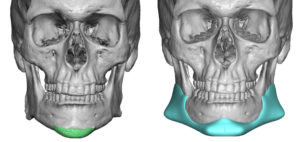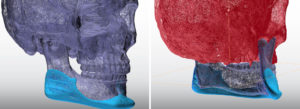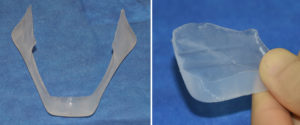Background: A custom jawline implant provides the greatest contour change possible to the lower third of the face. That is not surprising due to its sheer size and surface area coverage of the mandible. The design process is impressive and empowering as it is possible to design about any size and dimensions that the patient wants.
But there are two major challenges in the custom jawline implant design process. First, determining what design will create the desired external facial change is not an exact science. No computer design software yet exists that can tell us what that design should be. Currently the design still requires all dimensional input from the surgeon which is based ion their personal experience. But of almost equal importance is can the implant as designed actually be placed and how is that exactly done.
To place a custom jawline implant as designed as a single piece, a ‘front to back’ technique is needed. The most narrow part of the subperiosteal pocket along the jawline is right below the mental nerves. To get the implant underneath the mental nerves safely, the more vertical jaw angle parts of the implant must be become ‘moldable’.
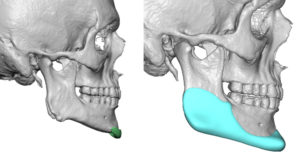
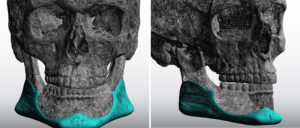

The design of a custom jawline implant must take into consideration more than its shape and dimensions for the desired external facial effect. Its design must consider how it can be placed through minimal incisions as well as properly oriented on the bone as designed.
Case Highlights:
1) Custom jawline implants due to their size and the need for small incisions create the greatest challenges for intraoperative placement.
2) Placing the implant in one piece as designed requires maneuvering the jaw angles portion under the mental nerves without injuring them.
3) In a front to back placement technique, malleability of the large jaw angle portion of the implant is the key.
Dr. Barry Eppley
Indianapolis, Indiana




